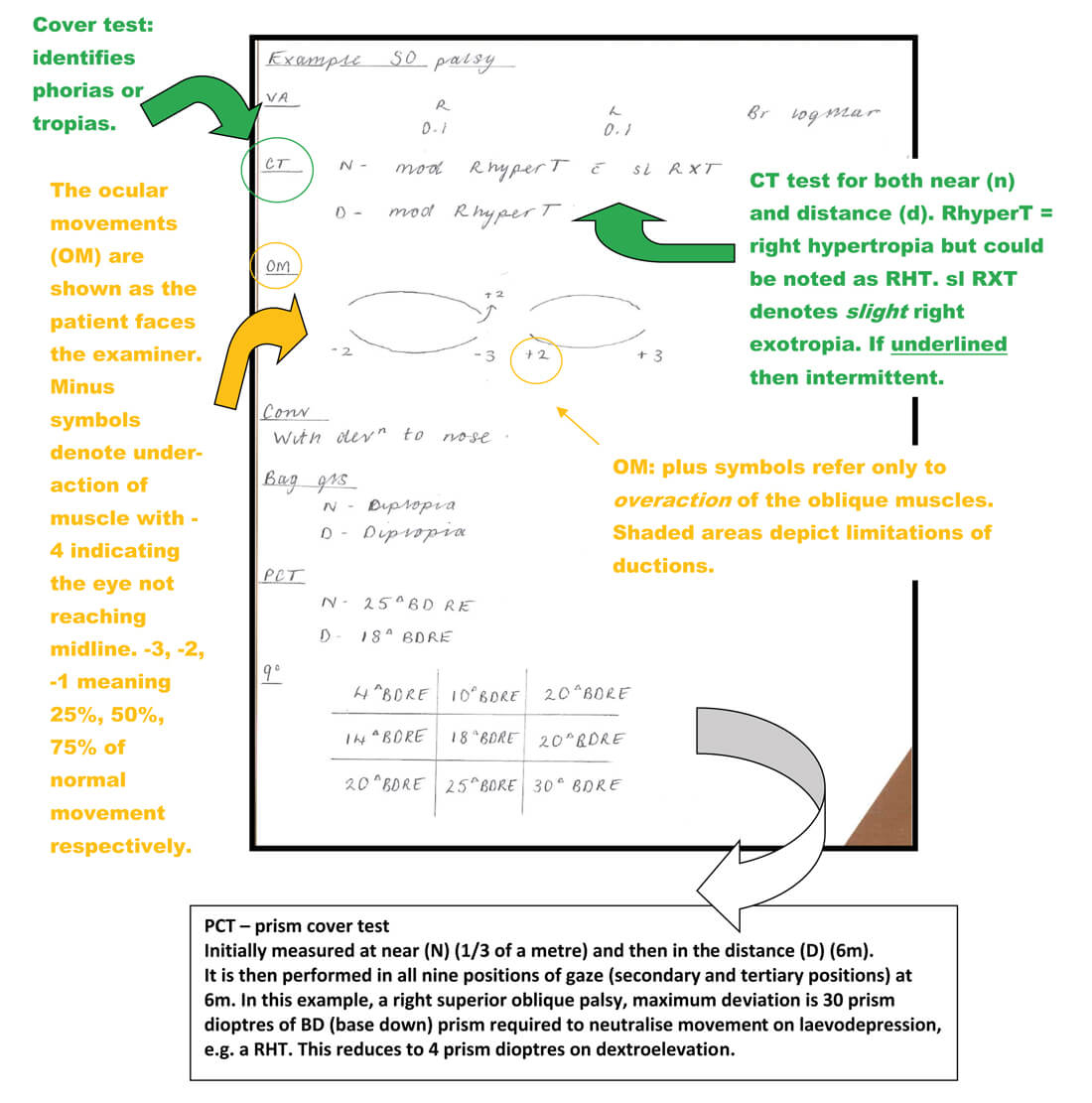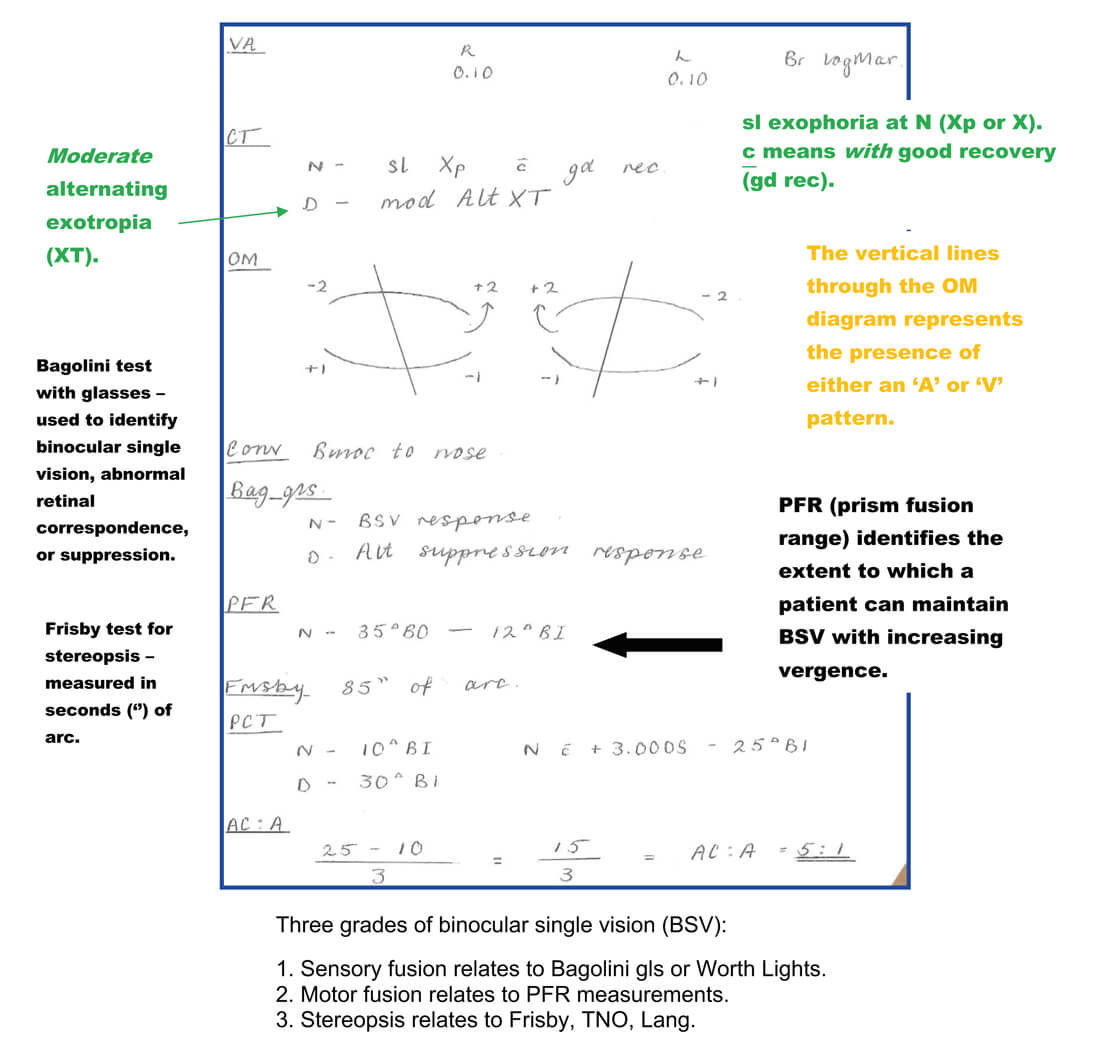An orthoptist report may well look like a piece of Japanese Shodo, however, it does in fact contain some extremely useful information. This piece will briefly explain some of the common brush strokes seen on a report. There is some variation amongst orthoptists, however, this article will cover the diagrammatic representation of ocular movements recommended by the British and Irish Orthoptic Society. Unfortunately, there isn’t scope in this article to discuss the clinical significance of the findings, so for more information please talk to your friendly departmental orthoptist.


Example 1.
In relation to superior oblique palsy you may also see BHTT. This shows results of the Bielschowsky’s head tilt test. This helps differentiate superior oblique (SO) and superior rectus (SR) weakness. In this example, the vertical deviation increases to 25 prism dioptres when tilting the head to the right and decreases to 15 prism dioptres when tilting the head to the left. During head tilt right, the elevating action of the right superior oblique muscle is unopposed causing an increase in the right hypertropia. During head tilt left, the vertical deviation is decreased because the left superior oblique muscle is unaffected and therefore able to offset the action of the left superior rectus muscle.


Example 2.
Summary
The first example showed a right superior oblique under-action with a right hypertropia on distant fixation measuring 18 prism dioptres and 20 dioptres on near fixation. This deviation increased to 30 prism dioptres on down / left gaze. There was a -3 under-action of the right superior oblique with +2 overaction of the right inferior oblique with updrift on left gaze shown by the arrow. The measurements in nine positions of gaze can be helpful in determining the best surgical options, in this case right inferior oblique weakening.
The second example shows an alternating distance exotropia with a V pattern of ocular movements, bilateral inferior oblique overactions and superior oblique underactions.
This short article has briefly touched on the common diagrammatic representations of ocular movements found in an orthoptic report. These can be difficult to interpret. Though not possible to discuss the clinical significance of each test, further information can be sought from your hospital orthoptist.
COMMENTS ARE WELCOME





